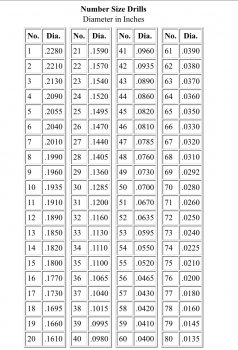Mark Barone
Well-Known Member
I'm talking about pins. Beginner problem . I am trying to combine drillbit sizes with pin sizes and want to have a system. It seems that having a 1/4 inch drill bit for a 1/4 inch pin is not always the case. Right now I am just doing practice runs on scrap wood and seem to waste a bunch of time and buy useless bits. Im thinking the same size bit may wobble a hair and make the hole too big. But then trying to find a bit a hair smaller seems difficult. Yesterday I bought a 27/64 and 1/2 millicentimeterinch bit.

